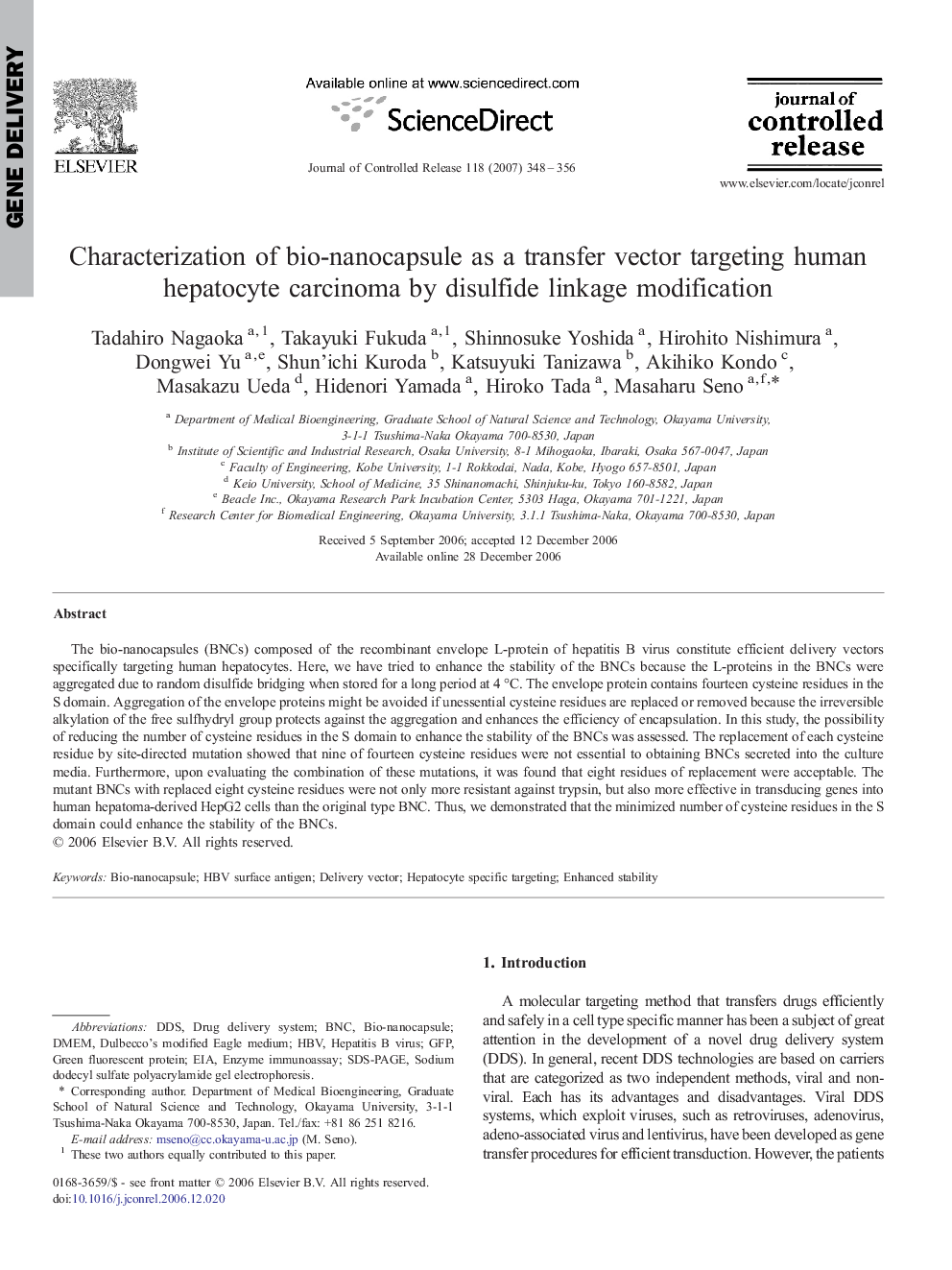| Article ID | Journal | Published Year | Pages | File Type |
|---|---|---|---|---|
| 1426978 | Journal of Controlled Release | 2007 | 9 Pages |
The bio-nanocapsules (BNCs) composed of the recombinant envelope L-protein of hepatitis B virus constitute efficient delivery vectors specifically targeting human hepatocytes. Here, we have tried to enhance the stability of the BNCs because the L-proteins in the BNCs were aggregated due to random disulfide bridging when stored for a long period at 4 °C. The envelope protein contains fourteen cysteine residues in the S domain. Aggregation of the envelope proteins might be avoided if unessential cysteine residues are replaced or removed because the irreversible alkylation of the free sulfhydryl group protects against the aggregation and enhances the efficiency of encapsulation. In this study, the possibility of reducing the number of cysteine residues in the S domain to enhance the stability of the BNCs was assessed. The replacement of each cysteine residue by site-directed mutation showed that nine of fourteen cysteine residues were not essential to obtaining BNCs secreted into the culture media. Furthermore, upon evaluating the combination of these mutations, it was found that eight residues of replacement were acceptable. The mutant BNCs with replaced eight cysteine residues were not only more resistant against trypsin, but also more effective in transducing genes into human hepatoma-derived HepG2 cells than the original type BNC. Thus, we demonstrated that the minimized number of cysteine residues in the S domain could enhance the stability of the BNCs.
